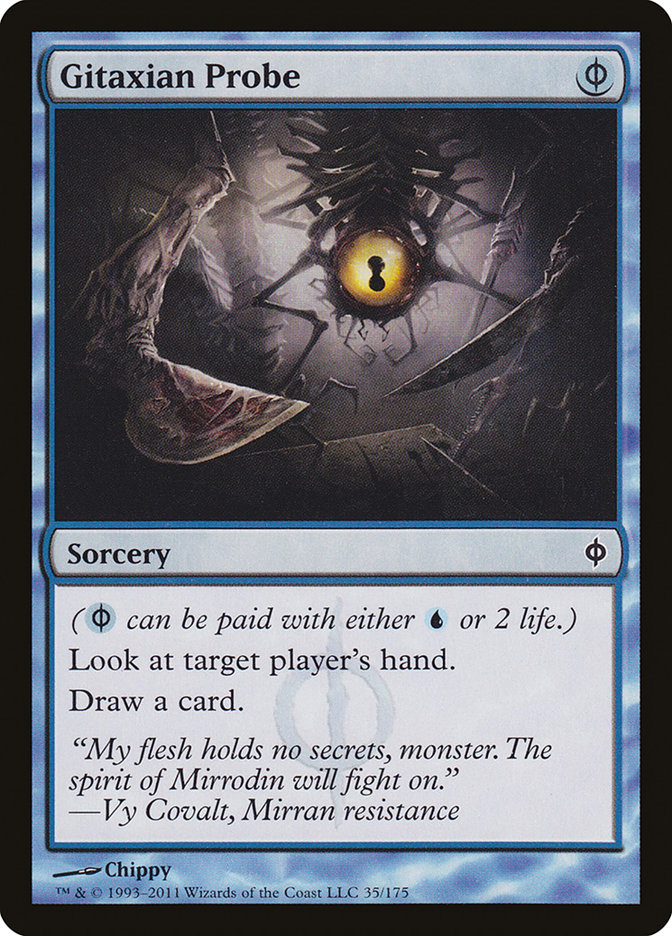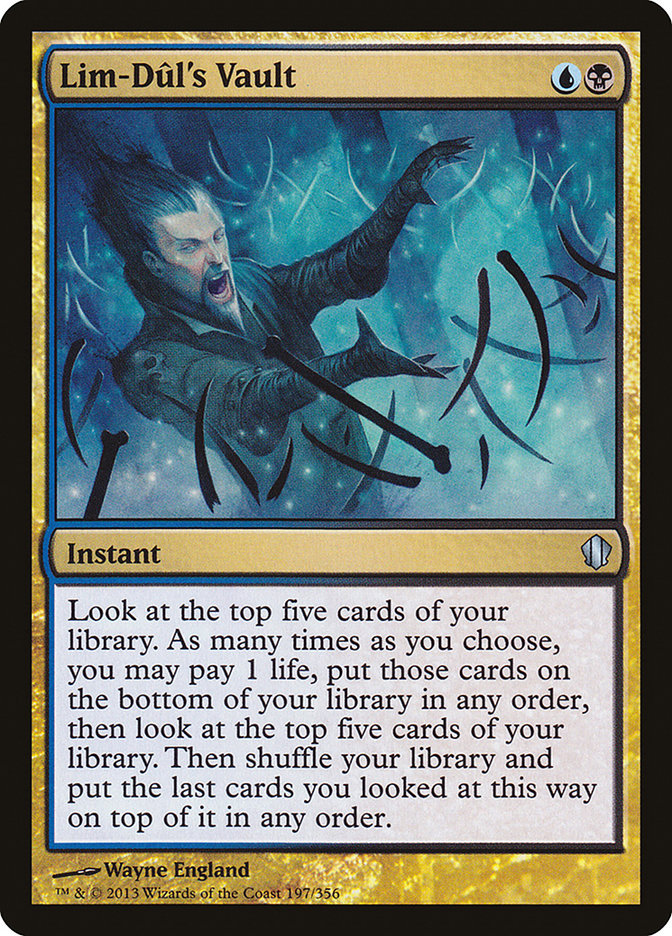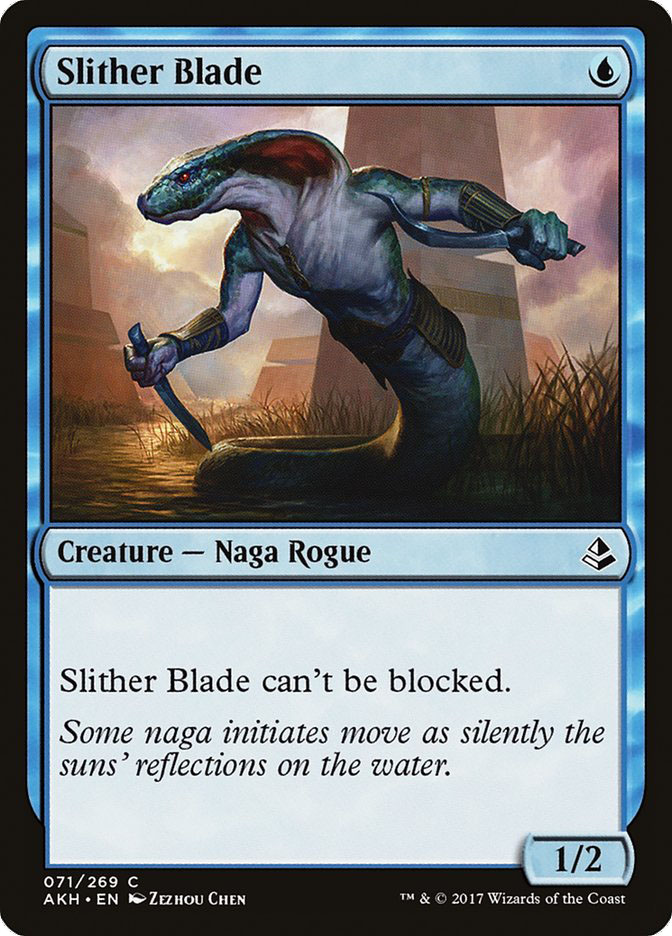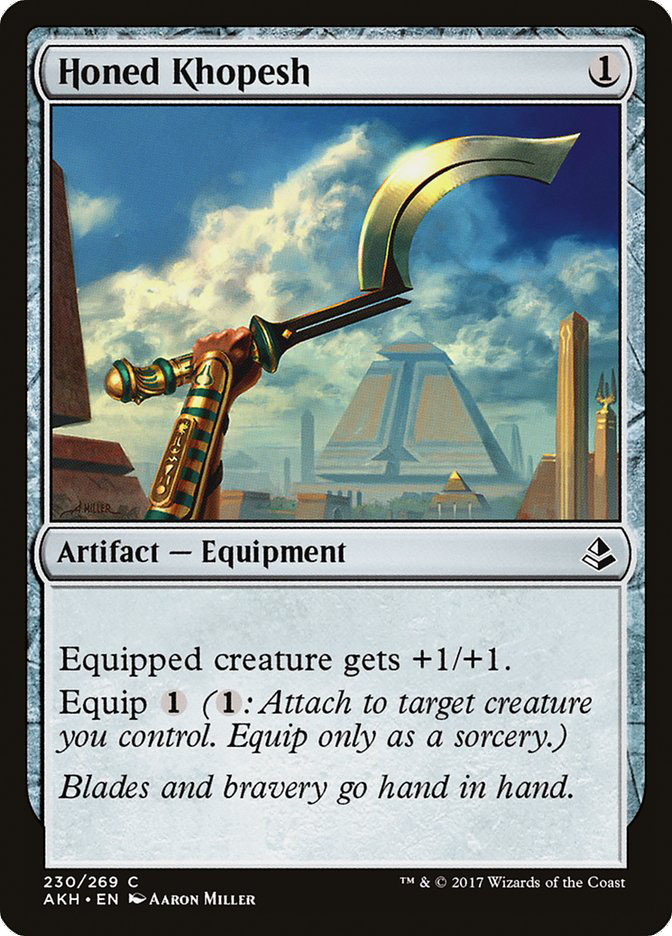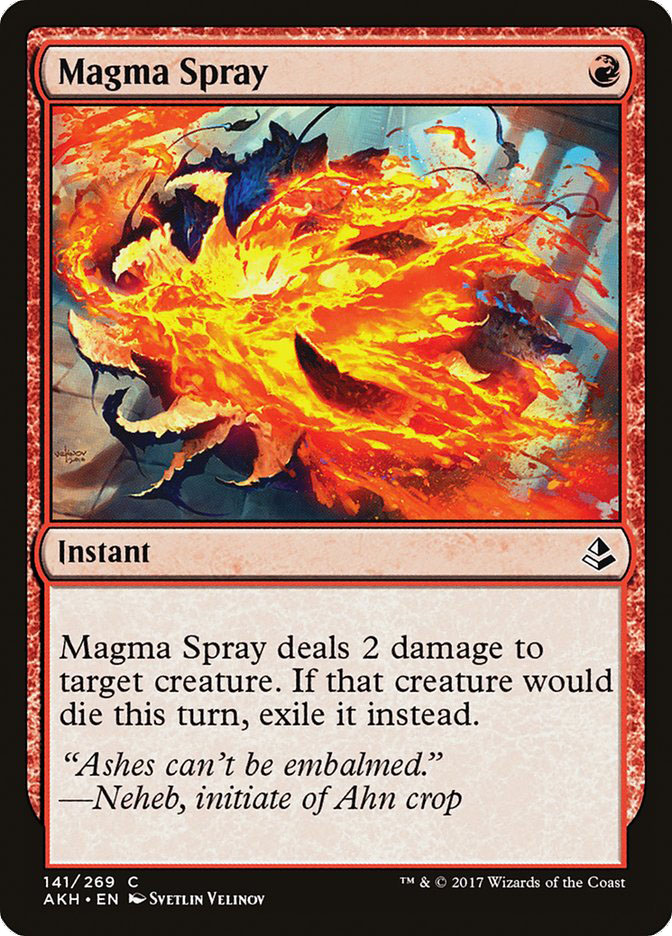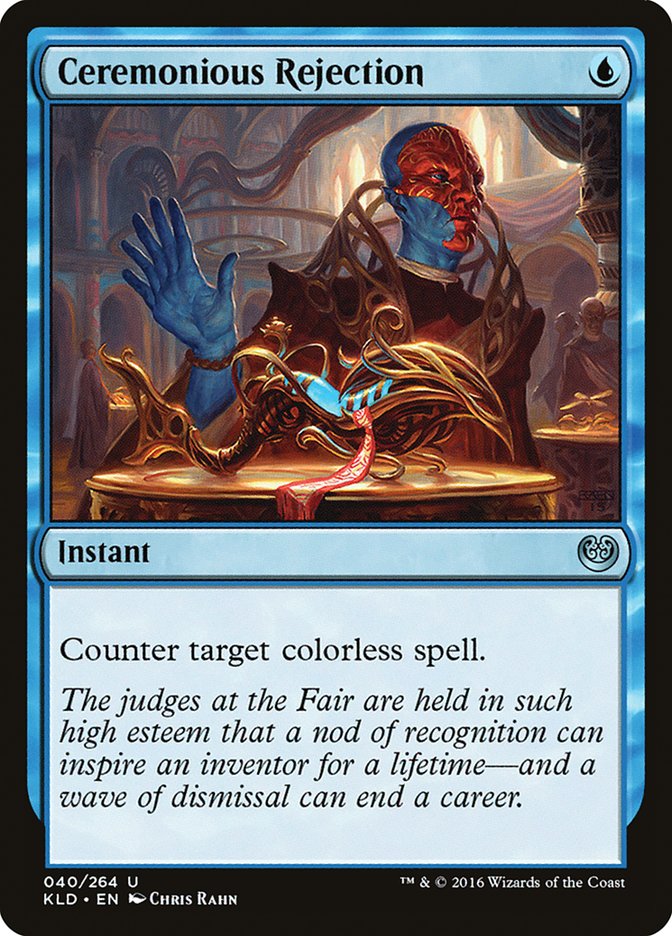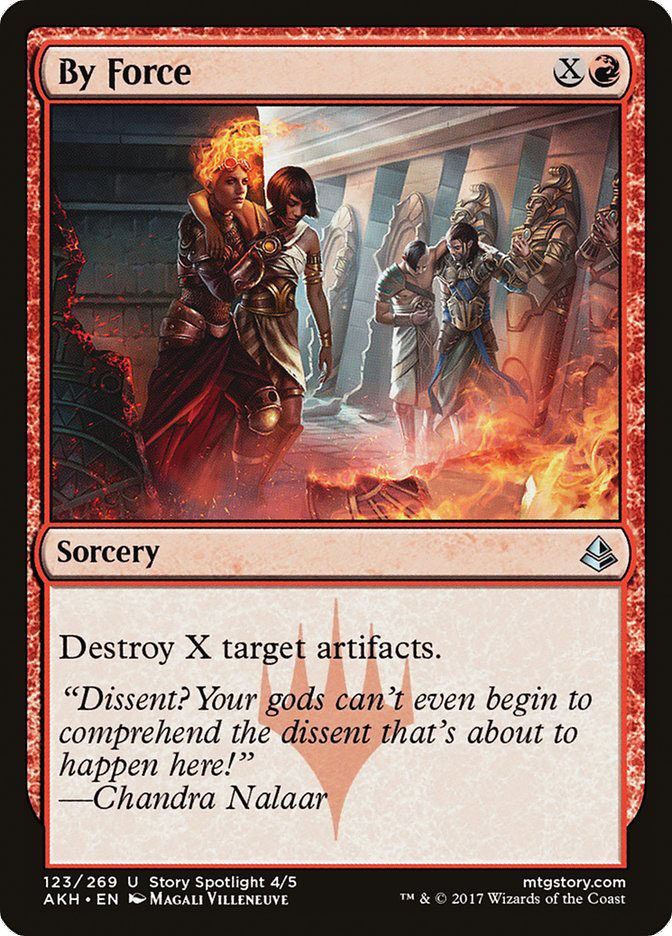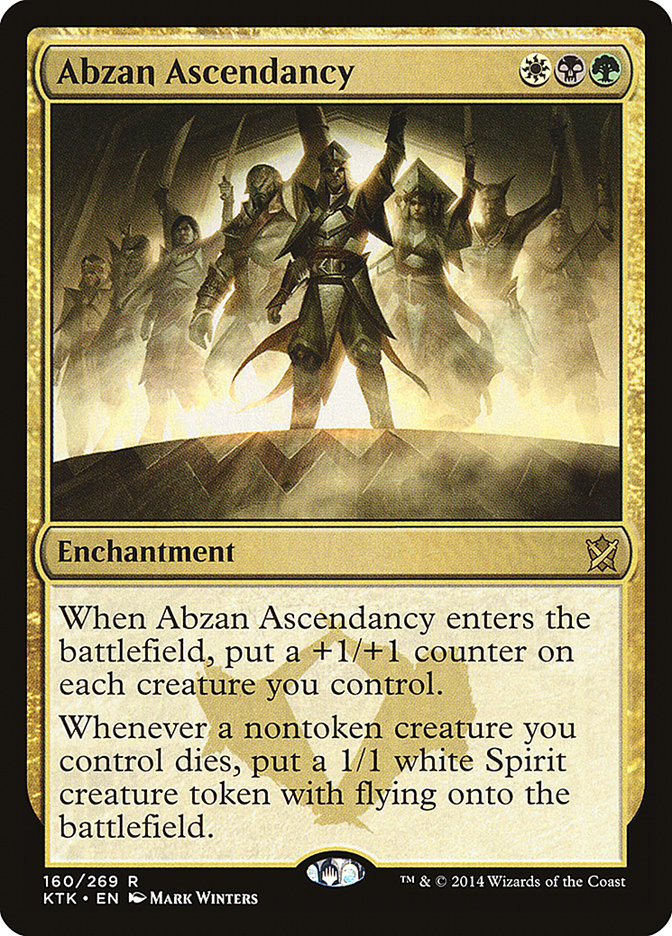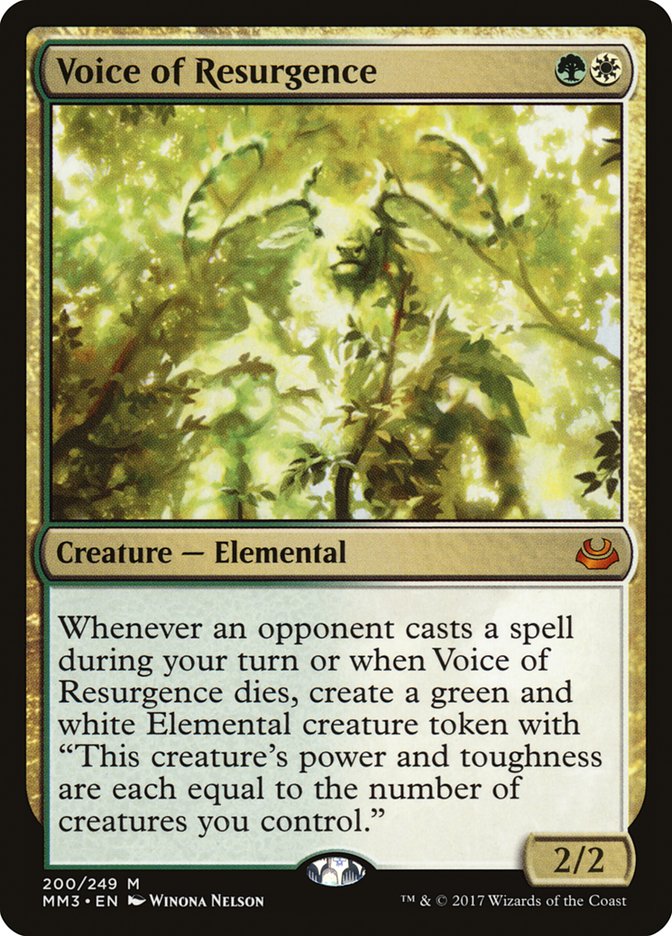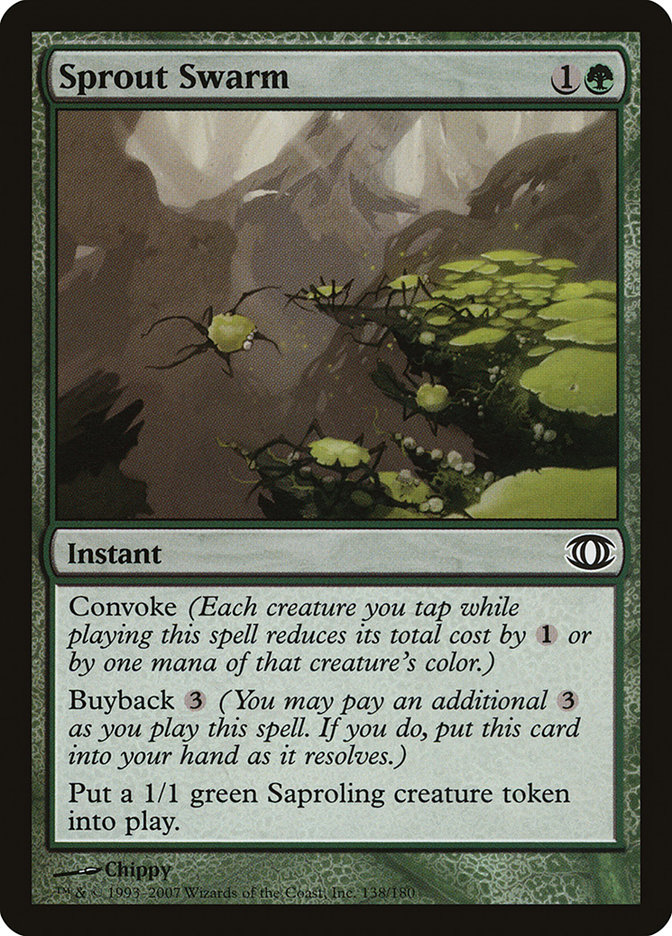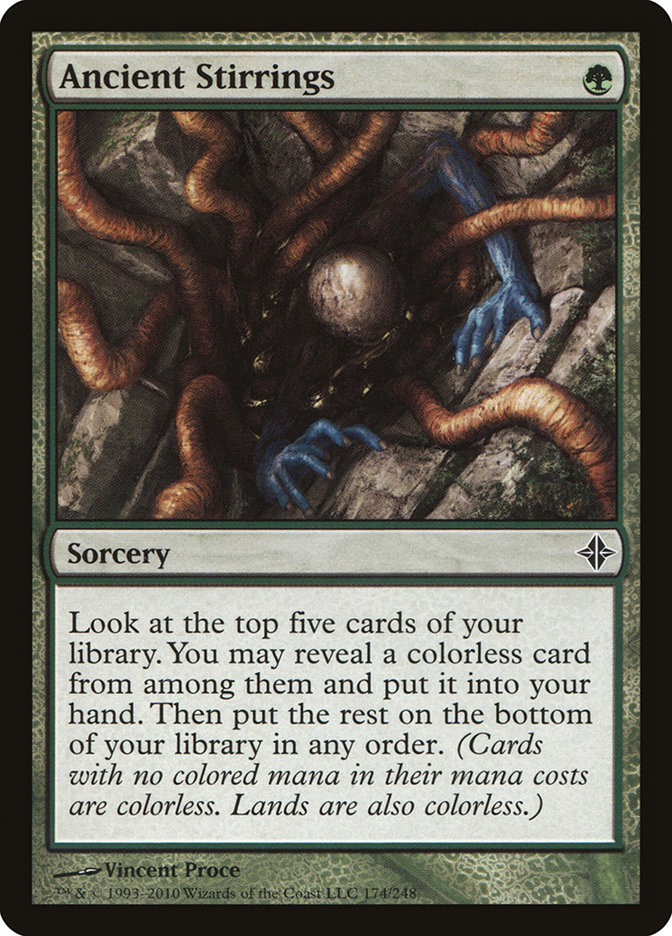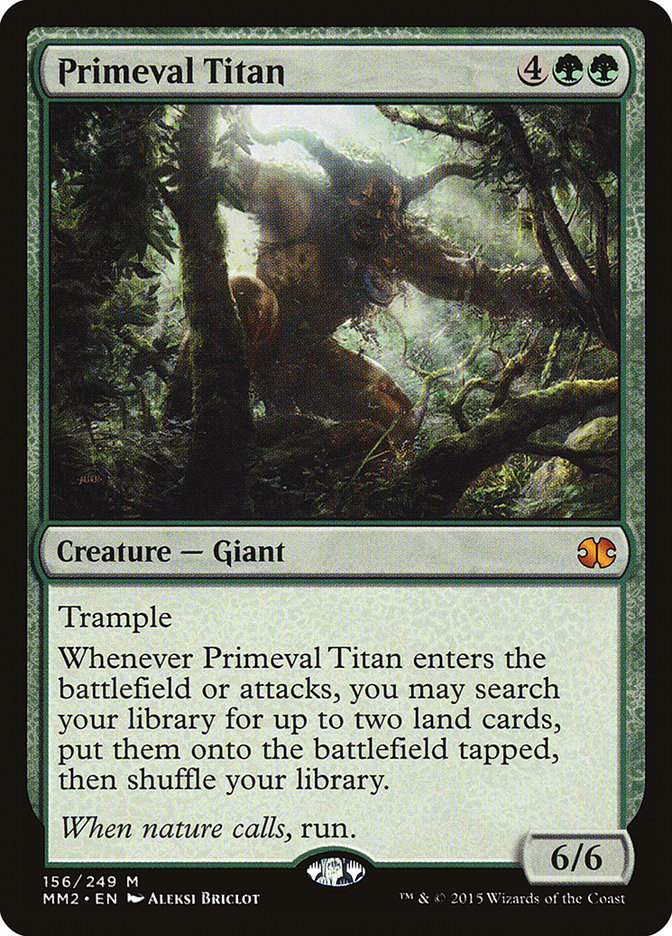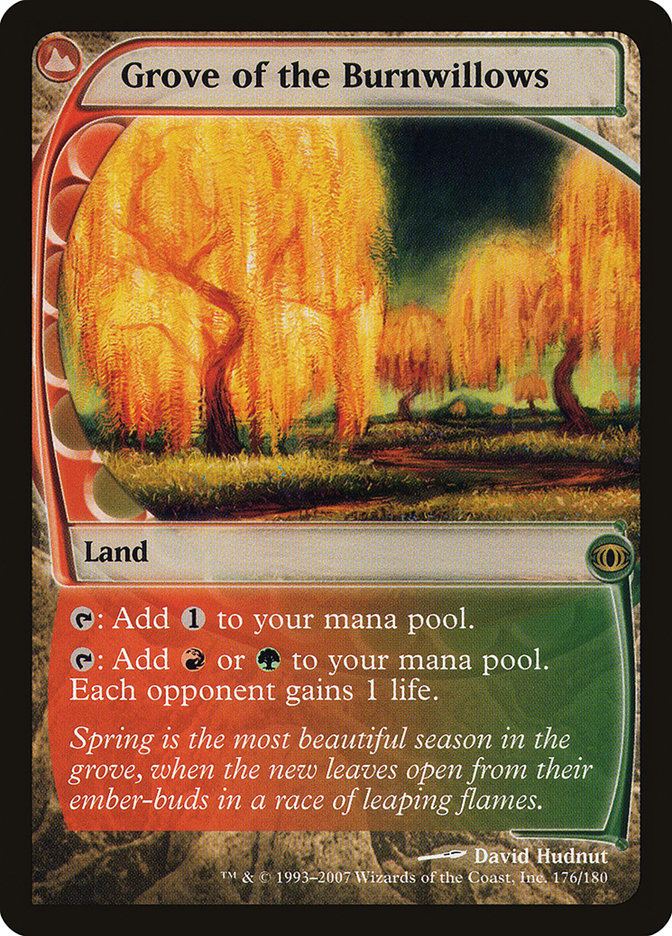#GPVegas
is coming up, and with it, a wide range of formats to prepare for (though,
sadly, not the exciting, new, Marvelous Standard). This GP will be a huge
event, and I expect a lot more players than usual going and focusing on
side events, both due to the magnitude of the event giving it even more of
a convention feel and because not everyone will want to play in each of the
formats offered for each GP. As a result, I’d like to take a bit of a
“something for everyone” type of approach today.
Legacy
The first GP will be Legacy, and I’m going to be honest, I haven’t played a
game of Legacy since Sensei’s Divining Top was banned. Don’t get me wrong,
it’s not like I got mad and quit the format. I’m really glad that card
isn’t legal and pushed for its banning for a long time; there just aren’t
that many occasions to play Legacy, and I’ve been busy with other things.
Looking at the format, it’s interesting to me that Grixis Delver is the
most played deck, since Grixis Death’s Shadow seems to be becoming the most
played Modern deck, largely because Death’s Shadow is so much better than
Delver of Secrets. I really wonder if these Delver decks in Legacy should
just be Death’s Shadow decks.
The best argument for Delver over Death’s Shadow being correct in Legacy
while it’s wrong in Modern is the existence of the original dual lands.
Basically, in Modern, you have to take around four more damage per game
from your lands in that kind of deck, which means that, if you want to
throw away that much life, you’re giving up about four extra starting life
in opportunity cost that you’d have if you played Delver and didn’t need a
low life total. If you were going to start at fifteen anyway, playing a
deck that wants to put itself to ten means you’re only five life below
other people, but if you can start at eighteen instead, taking only a
couple points from your fetchlands, maybe you get more value by holding on
to that life.
On the other hand, there are so many Legacy decks that don’t really care
about your life total–by my estimation, a lot more than there are in
Modern, so I think it’s generally safer to go to a low life total than it
is in Modern. Moreover, Gitaxian Probe is legal, and if you really want to
go deep and fine-tune your life total, you can play Lim-Dul’s Vault.
Outside of life total considerations, the presence of Brainstorm and Ponder
definitely increase the value of Delver of Secrets, so it’s possible that
Delver is more improved by moving to Legacy than Death’s Shadow is as a
card. Also, given that Grixis decks generally play Young Pyromancer and/or
True-Name Nemesis, it’s likely that flying is just a lot more valuable and
that getting through with Death’s Shadow is too hard.
That said, I’m curious about Esper Death’s Shadow–something along these
lines:
Creatures (17)
Lands (18)
Spells (25)

The idea is that because Death’s Shadow hits in larger chunks, you don’t
need the reach from Lightning Bolt as much as you do if you’re attacking
with Delver of Secrets. Instead, you can play Swords to Plowshares, which
allows you to easily answer opposing Gurmag Anglers, and it can also save
you from burn spells if your Death’s Shadow gets too big by immediately
setting your life total to thirteen.
Street Wraith also means that you’re functionally playing a little bit more
mana than the Grixis Delver decks, which I think supports playing some
three-mana spells in Monastery Mentor and Lingering Souls, which also let
you take full advantage of Deathrite Shaman.
Personally, I’ll be playing Legacy, but I’m hoping to play Sealed as well,
so my master plan involves picking up my Storm deck without playing any
games and hoping I don’t do well in the tournament. The incentive
structures in this event are weird.
Sealed
I generally try not to write about Limited too much, but I’ve really been
enjoying Amonkhet. I think the draft format is, correctly, widely
understood to be very aggressive. Exert creatures are great and they making
blocking very difficult. They also incentivize playing with combat tricks,
especially Djeru’s Resolve, Spidery Grasp, Supernatural Stamina, and,
should you be so lucky, Prepare, each of which can let your exert creature
attack more often. Those tricks further punish people who are trying to
block. Furthermore, the fact that the Cartouches are all quite good and
that Trials encourage people to play them even more means that blocking is
harder because creatures will often be larger than you expect, and the
additional text on each of them makes blocking harder in one way or
another.
At the Pro Tour, a lot of people were taken by surprise by hyper low curve
aggressive decks that tried to go under everyone else by piling Cartouches
and Honed Kopesh onto one-mana creatures like Slither Blade.
It’s important to remember that Sealed is an entirely different format than
Booster Draft, and what you should be looking to do is entirely different.
While all of those things are still present in the format, far fewer pools
with have the depth and synergy of aggressive cards available to people who
push the strategies in Draft. Additionally, because most removal spells and
most bombs get played in Sealed and more packs are opened, there’s a higher
concentration of bombs and removal in Sealed.
The fact that there are more bombs forces people to prioritize playing
their removal, and then the fact that more removal is played tends to slow
games down. Games slowing down naturally rewards playing slightly more
expensive spells, and the result is that higher curve midrange decks are
generally better in Sealed than in Draft across essentially all Limited
formats, and this set isn’t exceptional enough to deviate from that.
This change has a huge impact on the power level of various commons, and by
extension, the power level of various colors. Red and white are the best
colors in Booster Draft because they have a lot of exert creatures and
generally have a large number of powerful cheap spells that play well in
aggressive decks.
Magma Spray is the best common in Draft because curve and tempo are so
important, so everyone is playing a lot of cheap creatures, and few people
are playing expensive creatures; so Magma Spray kills almost anything and
gains tempo while doing it. In Sealed Deck, the tempo is less important and
there are more big things that are important to kill, so it’s even possible
that Final Reward, a surprisingly mediocre card in Draft, might be better
than Magma Spray in Sealed.
My best advice for Sealed at GP Vegas is to be very cautious when
considering a R/W deck in Sealed. Both colors have a lot of playable cards,
and a lot of pools can build something that looks like a solid R/W draft
deck. It’s easy to think, “Sealed is less powerful than Draft, and people
won’t be prepared for a deck this aggressive, so I’ll run them over.” This
is an acceptable line of thought if your pool doesn’t let you do anything
more powerful, but in general, I’ve seen very good looking R/W decks
seriously underperform in this Sealed format, and I think it’s very easy
for biases from Draft to lead you to a trap if you’ve drafted a lot more
than you’ve played Sealed.
Modern
Grixis Death’s Shadow is the current hot deck among the pros, and I’m
pretty sure it’s a great deck, but I personally haven’t had great results
with it, though I haven’t given it much of a chance. Personally, I’m
currently drawn to and impressed by Todd Stevens’ run with Eldrazi Tron.
Credit to him, he plays the deck constantly and knows it extremely well,
which is massively important in Modern, but you can’t put up the results he
is unless your deck’s great on top of it, and his success on the SCG Tour
is matched by success on Magic Online.
This deck is the real deal, and even if you don’t play it, I suggest
getting on board the trend of sideboarding Ceremonious Rejection wherever
you can.
Relatedly, another great deck to give a serious look is Affinity.
Ceremonious Rejection is likely pushing other artifact hate out of
sideboards to make room, since it does double duty there, but while it’s
serviceable against Affinity, it’s nothing compared to a dedicated hate
card like By Force. The prominence of graveyard decks at the moment further
cuts into the sideboard space available to people, and the result is a
relatively hospitable environment for Affinity, which I’d expect to be a
relatively good deck against Eldrazi Tron. Affinity has historically been
competitive with Eldrazi and solidly favored against Tron. Walking Ballista
is a serious problem, but I think you’re probably fine as long as they
don’t draw that and a quick Tron. I’d look at bringing some Pithing Needles
in in that matchup to name Walking Ballista or catch an Expedition Map.
It’s hard for a brand new deck to compete with the established forces in
Modern that have had months (or years, in some cases) of play by hundreds
of players to tune them to perfection, so if you’re looking to make a good
run in the main event, I’d suggest playing a proven deck you know well. On
the other hand, if you’re going for side events or Modern isn’t your focus,
it’s actually a fantastic format to brew and play fun decks in.
Toward that end, I wanted to share some ideas I’ve been kicking around that
aren’t quite at the stage where I’d play them in a serious tournament but
are great starting points if you’re looking for a “casual competitive”
Modern deck.
These ideas are both inspired by the current Standard format, which is
really where most new things in Modern come from, since that’s where new
cards live.
The first is a Modern update of the most fun deck in Standard: my Abzan
Tokens deck.
Creatures (21)
- 2 Auriok Champion
- 2 Viscera Seer
- 2 Doomed Traveler
- 1 Cartel Aristocrat
- 2 Voice of Resurgence
- 4 Blisterpod
- 4 Thraben Inspector
- 4 Anointer Priest
Lands (22)
Spells (17)

This is very similar to my Standard deck–it has a ton of cards in common,
however, it gains another fantastic enchantment in Abzan Ascendancy. Abzan
Ascendency encourages you to play more cheap creatures to take full
advantage of it, and it lets you get away with playing more by making them
more impactful.
Lowering the curve and playing more cheap creatures allows you to cut lands
and play the fourth Cryptolith Rites, and the better mana available in
Modern allows you to cut lands without interfering with getting the colored
mana to cast your spells.
Fetchlands make Hidden Stockpile a lot better, since you can routinely
trigger revolt on turn 2, and Viscera Seer and Cartel Aristocrat make it
much easier to sacrifice creatures as needed, which is important for
Ulvenwald Mysteries and Abzan Ascendancy.
Auriok Champion functions as additional Anointer Priests, durable good
blockers because of their protection, to start gaining life right away
because they give you life for the front half of your creatures (the part
that isn’t a token) as well as your opponent’s creatures. This buys you the
necessary time to set up against opposing creature decks.
Voice of Resurgence is another big pickup from the transition to Modern, as
the tokens it makes can be absolutely huge, especially if you have Anointed
Procession going, when you’ll get even more of them, and it’s a much better
card when you have the ability to sacrifice it as needed, which this deck
excels at.
The other huge pickup is the unassuming singleton, Sprout Swarm.
If you have three Anointed Processions, this card goes infinite, but with
two, you can essentially tap every creature you control to make four tapped
creatures, which should easily be enough to win from almost any position;
and even with only one or zero, if you have Anointer Priest or Auriok
Champion, this will do a great job of buying time to find Anointed
Procession. Of course, with Viscera Seer or Hidden Stockpile, it can help
dig for that or other cards you need.
Fundamentally, this strategy might be too slow for Modern, or it might line
up too badly against decks that aren’t attacking or concerned with its life
total, but it has a very respectable game plan, does incredibly sweet
things, and can definitely trounce a decent range of Modern strategies.
The other consideration is the newly Standard-banned Aetherworks Marvel.
I think it’s generally assumed that you just have to play too many Standard
cards for this to be a serious consideration in Modern, since you don’t
pick up any energy producers, but Standard has proven that the payoff for
activating Aetherworks Marvel is incredibly high. While Modern may not make
it any easier to produce energy, it does offer a wide range of cards that
support the strategy in other ways.
Before I get to decklists, let me discuss a few of the cards that make me
most optimistic about Aetherworks Marvel in Modern.
First, and most importantly, Ancient Stirrings.
This fantastic library manipulation spell that’s inexplicably escaped
banning through years of enabling absurd decks around any number of
colorless cards is a great fit for Marvel, where your most important cards
are often Aetherworks Marvel, Aether Hub, and potentially, in a world where
you don’t want to play too many weak energy cards, Woodweaver’s Puzzleknot.
Additionally, of course, it can find a variety of finishers you might play
alongside Aetherworks Marvel.
Next up, Primeval Titan.
There are people who play Nissa’s Renewal or Oblivion Sower in Standard to
bridge their way to casting their spells in case they draw them naturally
and can’t hit them with Marvel, or if they can’t find or resolve a Marvel.
I don’t think I need to tell you how much better Primeval Titan is than
these cards, but just trust me that it’s an entirely different world, power
level and impact-wise. Primeval Titan is the perfect secondary Marvel hit
to bridge between your fair and unfair game plans.
Finally, Aetherworks Marvel’s companion on the Standard Banned list:
Emrakul, the Promised End.
Honestly, I think Marvel decks in Standard got a lot better when this card
was banned, and it’s not entirely clear they ever should have been played
together, but it’s possible that the shift to Modern makes delirium enough
easier that it’s worth playing Emrakul as a castable finisher. The biggest
cost to doing this, beyond deckbuilding restrictions, is that it creates
potential vulnerability to your graveyard being attacked, which might not
be worth it.
Anyway, here are a few different takes on using Aetherworks Marvel in
Modern:
Creatures (16)
- 4 Primeval Titan
- 3 Ulamog, the Ceaseless Hunger
- 1 Whirler Virtuoso
- 4 Servant of the Conduit
- 4 Rogue Refiner
Planeswalkers (1)
Lands (20)
Spells (23)
- 4 Serum Visions
- 4 Ancient Stirrings
- 4 Aetherworks Marvel
- 4 Woodweaver's Puzzleknot
- 3 Harnessed Lightning
- 4 Attune with Aether
Sideboard

This is a very straightforward approach. Play the key energy cards, Marvel,
some library manipulation, and some finishers. It really couldn’t be more
direct. The big question is whether the weaker energy cards like Harnessed
Lightning and Servant of the Conduit are worth it/necessary. It’s
reasonably likely that we can use Serum Visions and Ancient Stirrings to
find energy as needed, and we might be better off with better cards like
Lightning Bolt, or possibly even playing Glimmer of Genius, though I worry
that that’s too slow for Modern.
Grove of the Burnwillows is obviously chosen specifically as a
countermeasure for Death’s Shadow, since we don’t really care about the
opponent’s life total, but it also happens to be great for casting our own
spells. The purpose of the pair of Eldrazi Temples is that if you have six
mana, you can cast Primeval Titan and fetch both of them, and then you have
enough mana to cast Ulamog. It’d be nice to have more, but this felt like a
safe number to play while keeping my mana very consistent.
Another option is to work harder to be able to cast our finishers:
Creatures (12)
Planeswalkers (5)
Lands (23)
Spells (20)

I don’t really think this deck works. The basic problem is that I think
Attune with Aether is required to realistically get enough energy, but it
competes with playing cards like Chromatic Sphere in other Tron decks that
look like this, which results in playing fewer Tron lands to have enough
room for a borderline sufficient number of green sources. On top of that,
the other green energy cards are fairly weak and out of place. In exchange,
we get a Marvel strategy that can cast Karn on turn 3, so it seemed worth
offering as a suggestion, but I think it’s trying to do too much.
Creatures (13)
- 3 Primeval Titan
- 1 Thragtusk
- 1 Ulamog, the Ceaseless Hunger
- 3 Emrakul, the Promised End
- 1 Ishkanah, Grafwidow
- 4 Rogue Refiner
Planeswalkers (4)
Lands (20)
Spells (23)
- 4 Utopia Sprawl
- 2 Traverse the Ulvenwald
- 1 Grapple with the Past
- 4 Aetherworks Marvel
- 4 Woodweaver's Puzzleknot
- 4 Harnessed Lightning
- 4 Attune with Aether
Sideboard

It feels a little weird to build around delirium and only play two Traverse
the Ulvenwald, but I want to minimize my exposure to graveyard hate. This
deck also doesn’t include Ancient Stirrings; instead, it uses Utopia Sprawl
to accelerate into Garruk Wildspeaker as a backup plan to cast Primeval
Titan and Emrakul, the Promised End while adding planeswalkers and
enchantments to the deck to allow for larger discounts on Emrakul.
Again, I fear the simplest approach might be be the best, and this might be
trying to do too many things.
Regardless, those are my ideas for new Modern decks if you’re looking to
show off something spicy this weekend and have some fun surprising your
opponents.
Regardless of what you’re playing, I expect the weekend to be awesome!
Bonus Standard Update!
I’ve seen a few people ask about my updated Abzan Token list, given
Aetherworks Marvel’s ban from Standard. I’m really not sure how the format
will look, but I do think there’s a good chance this deck will be a good
choice. And while I wouldn’t change a lot from where I was before banning,
I would tweak a couple things. Here’s the Abzan Tokens deck I would play
now:
Creatures (19)
- 4 Catacomb Sifter
- 4 Blisterpod
- 4 Thraben Inspector
- 4 Anointer Priest
- 1 Angel of Sanctions
- 1 Oketra the True
- 1 Dread Wanderer
Planeswalkers (1)
Lands (25)
Spells (15)
Sideboard





